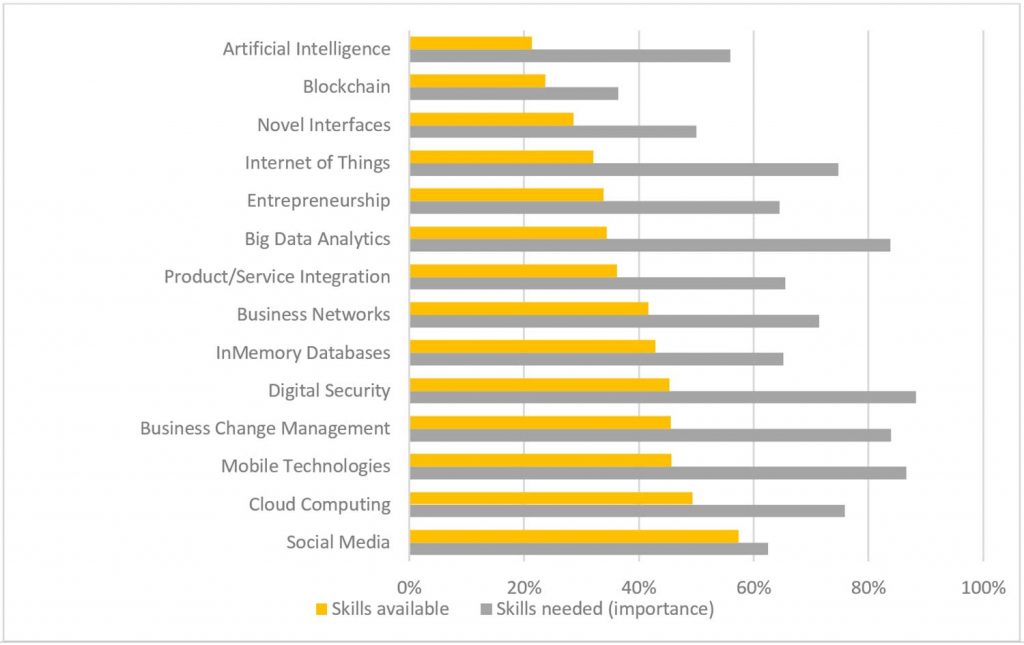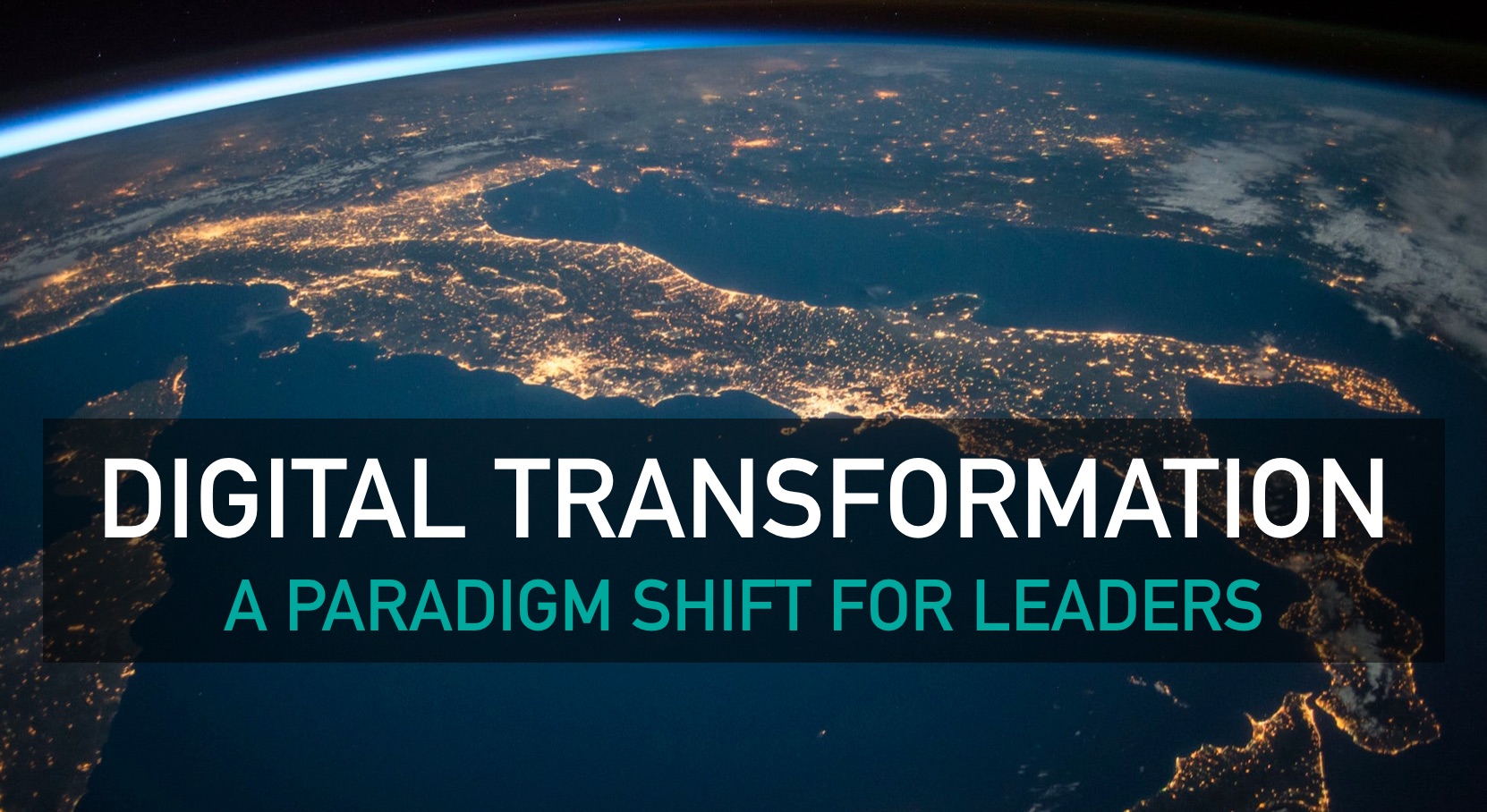Digital disruption? Doesn’t matter whether you’re a corporate professional, a teacher, a doctor, a stay-home mom, teenager or owner of a local restaurant chain, we can all feel the digital disruption and its impact on even the most mundane of tasks, such as grocery shopping. The rapid growth (and adoption) of technology has changed how societies, communities and families interact, consume media and purchase goods.
Market Leaders Crumble Under Digital Disruption
The digital transformation challenge is apparently not only faced by small scale businesses, but may in-fact pose to be a much bigger challenge for large legacy brands. We’ve seen the rise and fall of several companies over the past few years. This was due to several factors, but if you have closely followed the news and post-research, you would have realized that digital disruption may have played a role. Consequently for many of the cases, business closure wasn’t a direct result of the impact of technology and changing consumer behavior, but instead, had a lot to do with leadership and teams struggling to change fast enough.
We’ve seen Kodak, a strong legacy brand struggle and ended up shutting down its camera business a few years back. Then we saw Yahoo crumble over what medias reported as leadership issues. Nokia was a another story of market leaders who fell prey to the digital disruption. And all these brands are in fact digital players who struggled to change fast enough to meet the changing landscape. The latest shut down is probably the saddest as it holds sentimental value for many people of the older generation: Toys “R” Us from block to bust.

The Digital Transformation Challenge
So how do you successfully tackle digital transformation? Let’s take a look at a few options and challenges they pose:
Outsourcing the task to an agency: What you might be thinking, “Perhaps it’s best to let the digital natives handle the transformation for you. After all, they probably know best how this digital thing works….” Wrong. Stop right there. While digital natives may know a lot about digital, they are no expert about your industry. Nor to they know how best to navigate your corporate culture and values. The people who know your culture, industry, products and consumers the best, are your employees. While an external agency may help support you where you’re lacking in terms of digital skills and knowledge, transformation should start inside-out, as oppose to outside-in.
Hire the best digital talents: Your thought process may go like this, “What about getting digital talents up to speed on your product, services, consumers and industry. And then have them handle the digital transformation for you.” Again. Stop right there. If you’re planning on hiring a digital marketing strategist, a media biddable and perhaps a social media manager, note that these individuals may still not have what it takes to transform entire organizations. For organizational transformation to happen, you will need someone with very strong leadership skills, accepted by all departments from accounting, to IT and human resources.
“The key is not to hire the best digital talents, but to hire a highly skilled digital leader who has hybrid skills from leadership, marketing, IT to product management. And you will be competing with companies all over for this candidate.”
Create a Change Management and/or Scrum team: >You’re now probably thinking, “Well, if we can’t poach for digital leaders, the CMOs, CIOs and CXOs, then we create a team of individuals with various skills, group them together and they’ll probably have the combined skills and knowledge to tackle digital transformation”. While this sounds like the best option so far. This change and scrum team will face a lot of challenges across departments. They will face legacy servers, technology platforms that may not be able to scale. They will face budget constraint issues from the marketing department. They will face scrutiny from HR and accounting on the additional overhead cost. And most importantly, they will face pressure from their management (you), for return-on-investment. While in fact, digital transformation, is a semi-passive procedure with the primary main goal of breaking down resistance to change, distributing and fostering digital knowledge and learning throughout the organization.

For this very reason, the CMOs, CIOs and CXOs are perhaps the most important component for digital transformation to happen (or any corporate transformation for that matter). And this calls for a very important shift in leader’s perspective: an understanding of how digital works, the impacts, how it’s measured and how consumers interact with technology.
A Paradigm Shift for Leaders
From the 3 example options listed above, you can already quickly see that digital transformation start with leadership.
According to a digital IQ research by digital.pwc.com, 60 percent of executives lack skilled teams, 45 percent have slow or inflexible processes, 51 percent lack new data and technology integration and 63 percent use outdated or obsolete technology themselves.
The digital disruption challenge is a daunting one for organizational leaders, who would have to continuously stay updated on changing trends and efficiently map these trends internally, to push for change to happen in the organization on a daily basis. Digital is not rocket science, but it is a lot to take in, from blockchain, to AI, the many new marketing technologies entering the market, social listening, to the itty gritty details of what performance marketing and UTM means.
A recent article by Forbes explains that successful digital transformation starts by a beautiful relationship between the CMO and CIO. Consequently, the traditional job clarity and removal of ambiguity for effective team dynamic does more harm than good for digital transformation. Accordingly, it is the acceptance that there will be a lack of clarity and ambiguity is the new name of the game that what will propel companies in the right direction to successfully go through digital transformation. For companies, there’s no better person to sooth the uncertainty, frustration and agitation that the woking body will go through with the new norms of working ambiguously than the C-levels.
As such, a paradigm shift and change in perspectives becomes necessary for top management and leaders to take whole organization from legacy to digital.
The Learning Curve Challenge
The learning curve challenge is not only for digital leaders but to ensure their team is equipped with enough knowledge to confidently navigate new waters. While there are quite a number of digital curriculum and courses, worldwide. There are limited choices here in Thailand. Let alone, free and comprehensive resources with insights into digital.

A good place to start would be following digital-related digital medias and this free downloadable digital e-book in Thai, by STEPS Academy. The content covers guides for content transformation, personalized marketing, website experience and digital CRM.
What World Leaders Say on Digital Transformation
“At least 40% of all businesses will die in the next 10 years… if they don’t figure out how to change their entire company to accommodate new technologies” – John Chambers | Executive Chairman, Cisco System
“If you think of the average age of most board members around the world – and, frankly, of their backgrounds as well – they are not digitally ready.” – James Bilefield | Senior Advisor to McKinsey
“Silicon Valley is coming and if banks don’t up their game, then tech companies will take over the industry’s business. There are hundreds of startups with a lot of brains and money working on various alternatives to traditional banking” – Jamie Dimon | Chairman, President and CEO of JPMorgan Chase
“We should no longer be talking about ‘digital marketing’ but marketing in a digital world.” – Keith Weed | Unilever, 2015

